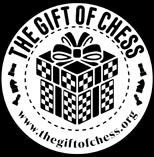 Chess Chats 13 Sep 1959, Sun The Press Democrat (Santa Rosa, California) Newspapers.com
Chess Chats 13 Sep 1959, Sun The Press Democrat (Santa Rosa, California) Newspapers.com
Chess Chats by George Koltanowski
International Chess Master
UNORTHODOX GAMBIT
Combinative players often find that it helps their style if they can begin a gambit attack right in the opening. The trouble with many of the gambit lines with Black is that their weak points are sufficiently well known to deprive them of all surprise value. This article is an analysis of a gambit which, although generally considered unsound, is much better than its reputation and which, judged by several master games of the last few years, offers real prospects of surprising your opponent.
Played in Budapest, 1956.
Gyula Kluger vs Karoly Honfi
Budapest Szikra (1956), Budapest HUN, May-??
Tarrasch Defense: Schara Gambit (D32) 0-1
(a) The so-called von Hennig-Schara gambit, which was much played in the 1930s and then abandoned because of the probably erroneous assumption that the following move deprives Black of counter-play.
(b) One strange fact about this gambit is that almost all published analysis of it have stated that it is better for White to play Q-R4ch before capturing the QP. In fact, the position after 5. QxP N-QB3; 6. Q-Q1 QPxP; 7. QxP BQ2; and 5. Q-R4ch B-Q2; 6. QxQP, PxP; 7. QxQP N-QB3 are identical.
Move Recommended
(c) Most books on chess theory recommend 9. Q-N3 here, although in practice 9. Q-Q1 is almost always played by White—an important consideration in deciding whether to use the gambit. However, 9. Q-N3 can also be met in an analogous way to the game given below: 9. B-QB4; 10. P-K3 (QxNP N-N5 is too dangerous), Q-K2; 11. B-K2 0-0-0; 12. 0-0; P-KN4.
White can then choose between three lines: 13. NxP KR-N1; 14. NxBP QR-B1; 15. N-R6 R-N3; and White loses material.
13. NxP KR-N1; 14. N-B3 R-N2; 15. P-N3 P-KR4; 16. R-Q1 P-R5; l7. NxP R-R1; 18. N-B3 N-KN5; with the threat of 19. … NxRP; 20. NxN Q-R5.
If 13. P-KR3 N5; 14. PxP NxP; and Black can continue either by the advance of the KRP or by Q-B3-R3.
(d) A game Chanov-Gusev, USSR, 1955, ended abruptly with 11. B-Q2 0-0-0; 12. Q-N3 B-B4; 13. B1 K-N1; 14. N-QR4 B-QN5; 15. P-QR3 BxBch; 16. NxB N-Q5; 17. Q-B3 R-QB1; 18. B-B4 KR-Q1; 19. N-N3 N-K5; 20. Q-N4 QxQch; White resigns.
Russian's Game
(e) In a game Giberzon-Korolev, USSR, 1955, the continuation was: 12. B-Q2 P-KN4; 13. P-K3 P-N5; 14. PxP NxP; 15. R-QB1 K-N2; 16. N-Q5 Q-Q3; 17. Q-B2 P-N3; 18. N-B4, KR-N1; 19. N-Q3 B-B4; 20. Q-N3 BxB; 21. BxB QxB; 22. QxQ RxQ; White resigns.
(f) White's best line may be to sacrifice a pawn in his turn by 13. P-QN4. A game Miroshinchenko-Gurevich. USSR, '55, went on in White's favor: 13. … BxNP; 14. B-N2 P-N5; 15. N-Q4 P-KR4; 16. N3-N5 K-N1; 17. R-B1 B-QB4; 18. RxB QxR: 19. N-N3 Q-K2; 20. Q-Q6ch QxQ; 21. NxQ N-Q4; 22. NxBP. However, Black could improve his play by 15. … B-Q3; 16. N3-N5 B-N1; intending 17. … P-QR3, 18. N-OB3,Q-K4.
(g) This loses time and is obviously unsatisfactory. However, the more natural 14. P-QR3 also turned out in Black's favor game Borisenko-Spassky, Leningrad, 1954, after 14. … Q-K4; 15. P-N4 NxN; 16. PxB N-B6ch. If now 17. PxN PxP; 18. BxP QxN; 19. R-N1 KR-N1ch; 20. K-R1 B-B3; 21. Q-K2 Q-Q6.
(h) Black's attack now quickly becomes overwhelming.
(i) A fine finish. If 23. BxQ RxPch; 24. K-R1 NxB; and wins.
CHESS QUOTE OF THE DAY: “The way that he plays chess demonstrates a man's whole nature.”—E. Ellin.






















